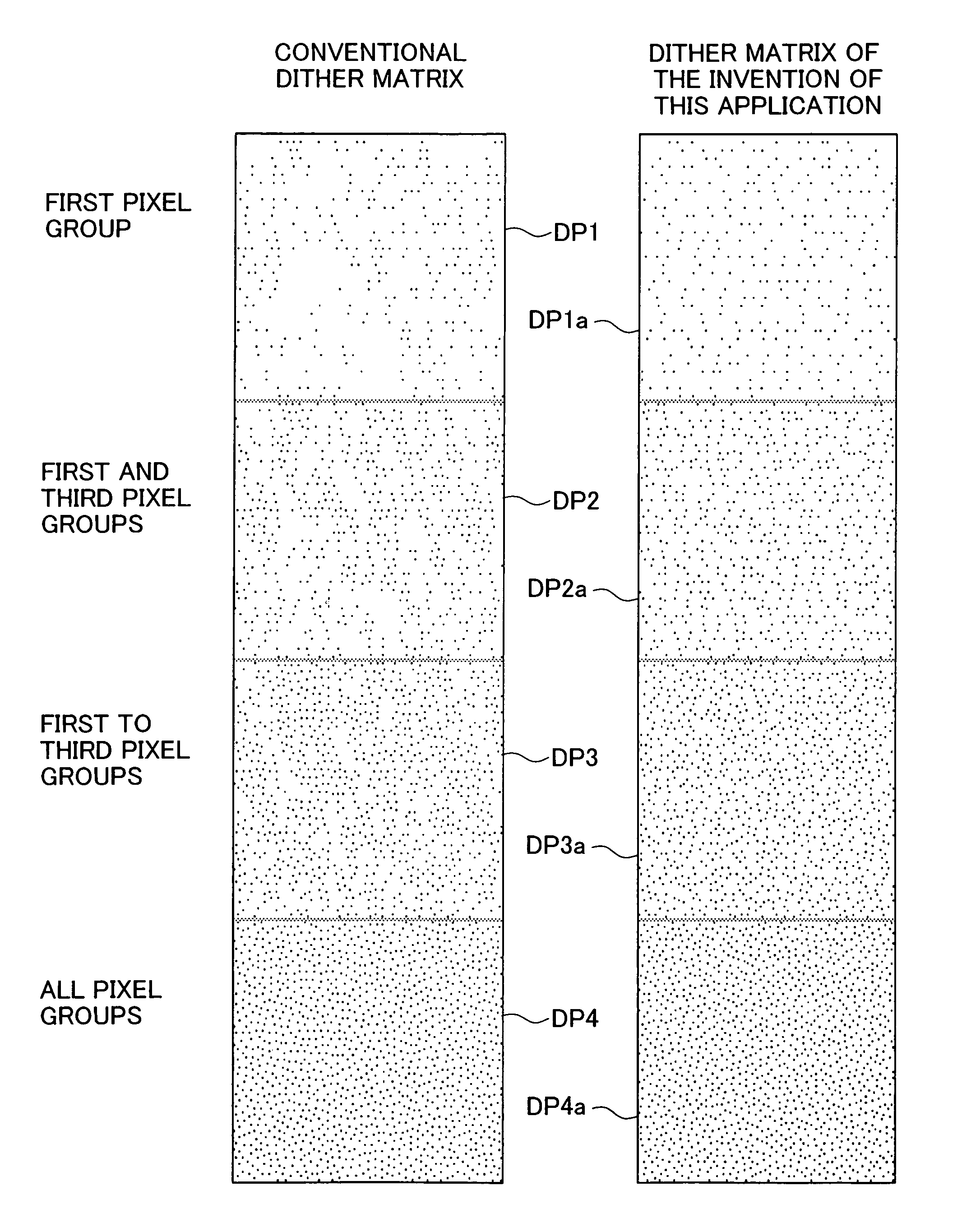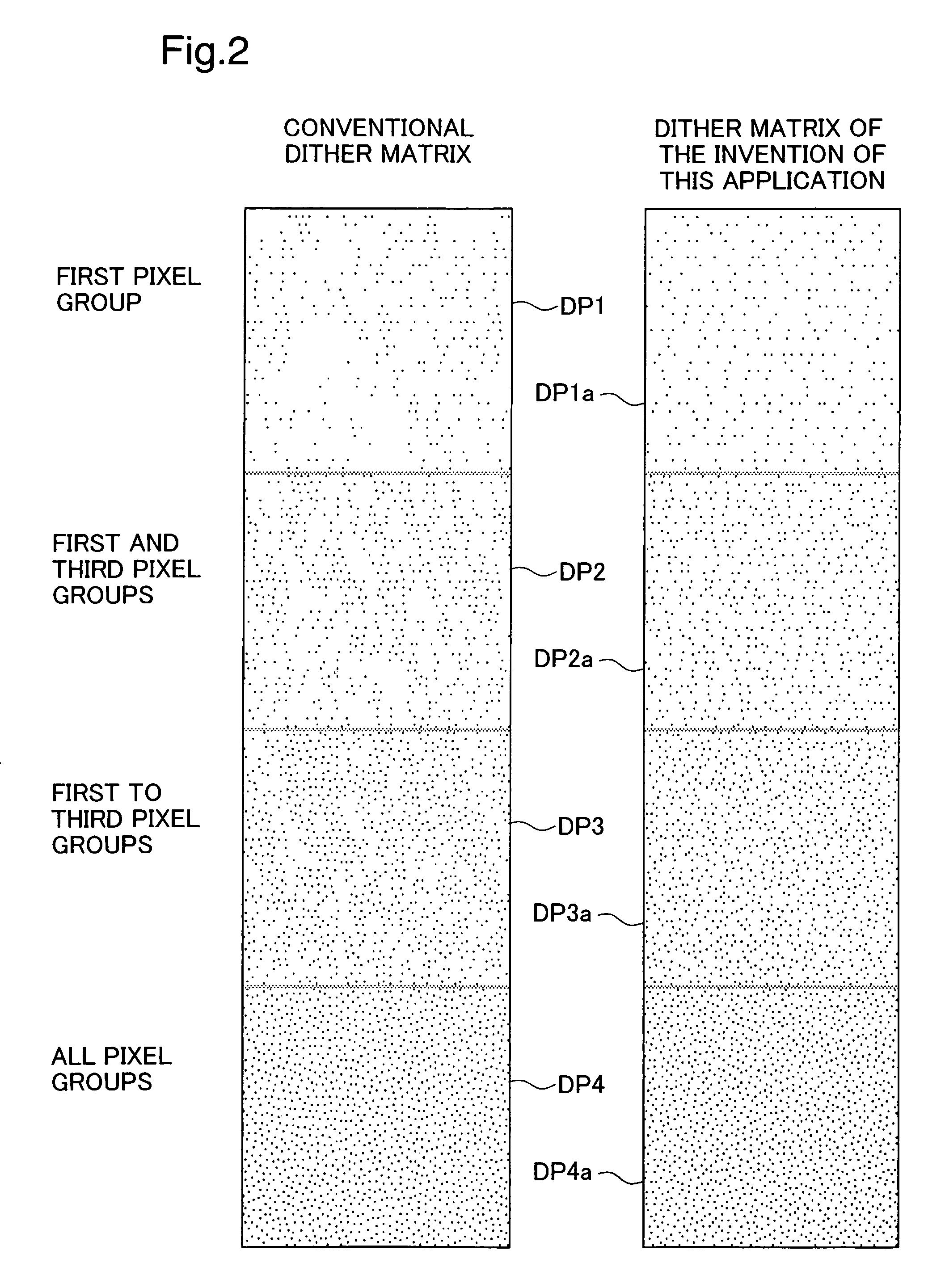High-image-quality halftone process
a halftone process and high-quality technology, applied in the field of printing an image, can solve the problems of image quality degradation, and the kind of image quality degradation is not considered, and achieve the effect of suppressing image quality degradation
- Summary
- Abstract
- Description
- Claims
- Application Information
AI Technical Summary
Benefits of technology
Problems solved by technology
Method used
Image
Examples
first embodiment
B. Dither Matrix Generating Method for the
second embodiment
C. Dither Matrix Generating Method for the
D. Variation Example:
A. Generation of Print Images Executed While Performing Main Scanning and Sub Scanning:
[0036]FIG. 1 is an explanatory drawing showing the state of the print image being generated on the printing medium by forming ink dots while performing main scanning and sub scanning for the first embodiment of the present invention. The main scan means the operation of moving the printing head 10 relatively in the main scan direction in relation to the printing medium. The sub scan means the operation of moving the printing head 10 relatively in the sub scan direction in relation to the printing medium. The printing head 10 is constituted so as to form ink dots by spraying ink drops on the printing medium. The printing head 10 is equipped with ten nozzles that are not illustrated at intervals of 2 times the pixel pitch k.
[0037] Generation of the print image is performed as follows while performing main scanning and sub scanning. ...
PUM
 Login to View More
Login to View More Abstract
Description
Claims
Application Information
 Login to View More
Login to View More - R&D
- Intellectual Property
- Life Sciences
- Materials
- Tech Scout
- Unparalleled Data Quality
- Higher Quality Content
- 60% Fewer Hallucinations
Browse by: Latest US Patents, China's latest patents, Technical Efficacy Thesaurus, Application Domain, Technology Topic, Popular Technical Reports.
© 2025 PatSnap. All rights reserved.Legal|Privacy policy|Modern Slavery Act Transparency Statement|Sitemap|About US| Contact US: help@patsnap.com



